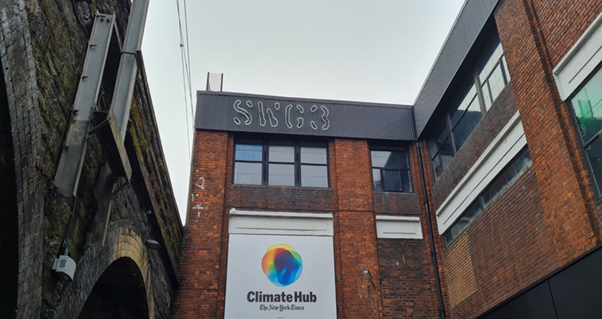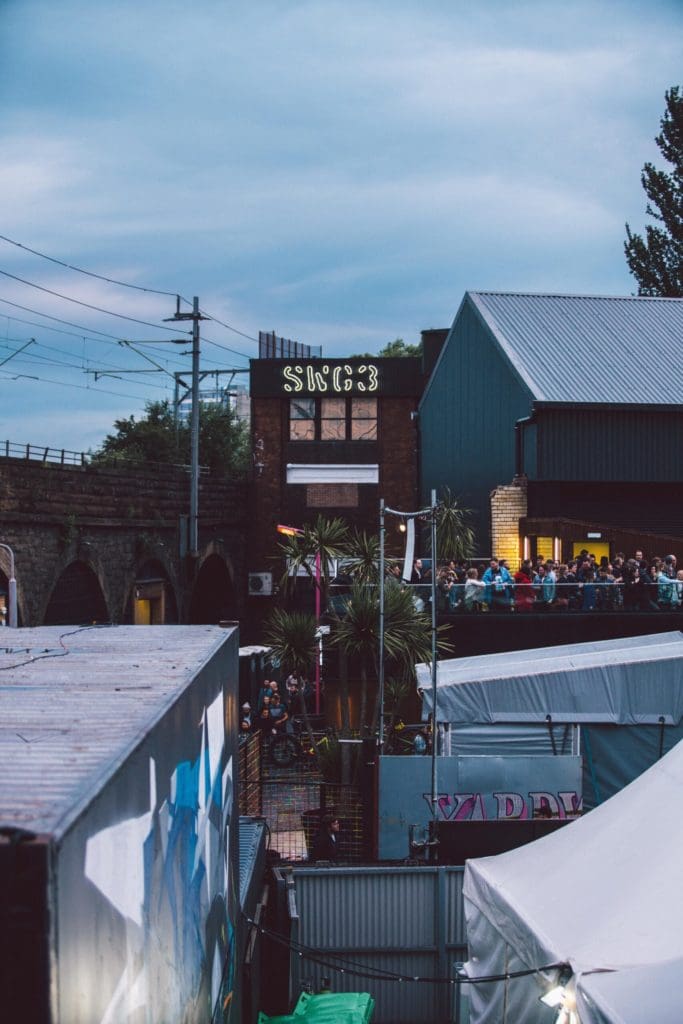The popular club was awarded £170,000 recently by the Scottish government to invest in recyclable body heat pumps in a new scheme to slash carbon emissions.
Named ‘Bodyheat,’ the system captures and converts human body heat created by staff and party-goers inside the venue into a renewable energy source for the club to use in place of traditional energy methods.
The energy generated can be stored for months until it is needed, long after the party is over
This system will reduce SWG3’s carbon footprint and allow the nightclub to operate more sustainably, reduce its carbon footprint and help in the fight against climate change.
The system has been pioneered by TownRock Energy. The heat pump company reached out to SWG3 when its founder David Townsend heard that Scotland’s leading arts venue was considering a green energy retrofit.

SWG3’s operation manager, Bob Javaheri, said: “Heat is thermal energy, and if you’ve ever found yourself in the middle of a packed-out club night then you’ll be well aware of just how much energy could be kicking around that room.
“Usually when you look to cool down those spaces using either air-conditioning or ventilation systems, you’re pretty much pulling the heat out of a space and releasing it into the atmosphere.”
“Instead of letting all that thermal energy just disappear into the night, this new system allows it to be transferred to waters and piped deep underground into boreholes where that energy gets stored, much like a battery, to use at a later time.”
Sending body heat up 650 feet into the air
Bodyheat sends captured body heat up to 650 feet into the air, warming the surrounding rocks and cooling the club during parties. The rocks act like heat batteries, so during non-club times, when the building is used as an office or arts venue, that stored heat can be pumped back up from the rocks to warm the space.
These measures will allow for the club and music venue to operate more sustainably, and they’re eliminating their traditional gas boilers completely.
“This is the heating system for the venue,” said Dave Townsend of TownRock energy, noting that the body heat energy will be more than enough to warm the building during Glasgow’s coldest months, which can average 40 degrees.
Based on previous annual attendance figures, SWG3 estimates that the project could save 70 tonnes of carbon emissions per year, the statement said.
Saving up to 70 tonnes of carbon each year
The club also announced its pledge to go net zero and to become carbon neutral by 2025 or sooner. According to its city council, Glasgow has city-wide aims of reaching net zero by 2030.
SWG3 hopes to ‘lead by example’ to show other venues across the world to decarbonize. In its net zero pledge announcement the venue offers to share its insights with all others looking to make similar sustainability shifts.

Andrew Fleming-Brown, managing director at SWG3, said: “The pilot system at SWG3 will allow for vast data to be collected, which will help us understand and optimise the system’s efficacy with learnings that can be applied to systems in the future.”
Leader of the Scottish greens and zero carbon buildings minister, Patrick Harvie MSP, said: “We are continuing to engage with other exciting projects regarding funding opportunities and will soon announce plans for a successor to the LCITP which will provide significant investment in large-scale heat projects and heat networks.”


